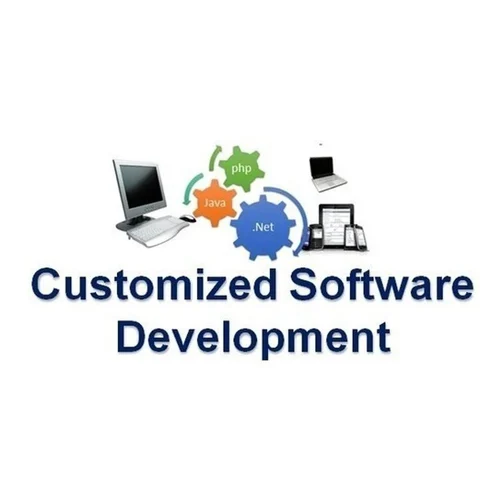
Custom software development can be a transformative investment for businesses, but understanding the costs involved is essential. This comprehensive guide aims to decode the intricacies of calculating the cost of custom software development. From factors influencing costs to budget considerations and the potential return on investment (ROI), learn how to assess and optimize your investment in custom software.
Table of Contents:
- Introduction
- Factors Influencing the Cost of Custom Software Development
- Budget Considerations and Planning
- Choosing the Right Development Team
- Determining the Scope of the Project
- Balancing Features and Complexity
- The Importance of User Experience (UX)
- Testing and Quality Assurance Costs
- Post-Development Support and Maintenance
- Calculating the Potential Return on Investment (ROI)
- Tacktical Marketing: Your Partner in Custom Software Development
- Conclusion
- Call to Action: Connect with Tacktical Marketing
1. Introduction
Investing in custom software can revolutionize how a business operates, but understanding the costs involved is crucial. This guide provides insights into assessing and calculating the cost of custom software development, ensuring a strategic and informed decision-making process.
2. Factors Influencing the Cost of Custom Software Development
- Project Complexity
- Technical Requirements
- Functionality and Features
- Integration with Existing Systems
- Scalability Considerations
Custom software development costs are influenced by various factors. Delve into understanding the impact of project complexity, technical requirements, desired functionality and features, integration needs with existing systems, and scalability considerations on the overall cost.
3. Budget Considerations and Planning
- Setting Realistic Budgets
- Identifying Essential vs. Nice-to-Have Features
- Contingency Planning
Effective budget considerations are vital for the success of any custom software project. Explore the importance of setting realistic budgets, identifying essential vs. nice-to-have features, and incorporating contingency planning to manage unexpected costs.
4. Choosing the Right Development Team
- In-House vs. Outsourcing
- Expertise and Skillset
- Reputation and Past Projects
The choice of the development team significantly impacts costs and project success. Learn about the considerations in choosing between in-house and outsourcing, evaluating expertise and skillset, and assessing the reputation and past projects of potential development teams.
5. Determining the Scope of the Project
- Defining Project Objectives
- Functional Requirements
- Setting Milestones and Deliverables
Clearly defining the scope of the project is essential for cost estimation. Understand how to define project objectives, outline functional requirements, and set milestones and deliverables to ensure a well-defined and manageable project scope.
6. Balancing Features and Complexity
- Prioritizing Features
- Balancing Complexity with Usability
- Incremental Development Approaches
Balancing features and complexity is crucial for cost-effective custom software development. Explore strategies for prioritizing features, finding the right balance between complexity and usability, and adopting incremental development approaches for flexibility.
7. The Importance of User Experience (UX)
- User-Centric Design
- Usability Testing
- Iterative Design Process
Investing in a positive user experience is a long-term cost-saving measure. Learn about the importance of user-centric design, usability testing, and the iterative design process to enhance user experience and reduce post-development adjustments.
8. Testing and Quality Assurance Costs
- Comprehensive Testing Strategies
- Automated vs. Manual Testing
- Bug Fixes and Iterative Testing
Quality assurance is integral to successful software development. Delve into comprehensive testing strategies, considerations in choosing between automated and manual testing, and the ongoing costs associated with bug fixes and iterative testing.
9. Post-Development Support and Maintenance
- Planning for Ongoing Support
- Security Updates and Patches
- Feature Enhancements and Upgrades
Post-development support and maintenance are ongoing costs that must be considered. Explore the importance of planning for continuous support, addressing security updates and patches, and budgeting for feature enhancements and upgrades.
10. Calculating the Potential Return on Investment (ROI)
- Identifying Key Performance Indicators (KPIs)
- Measuring Improved Efficiency and Productivity
- Quantifying Revenue Generation
Understanding the potential return on investment is crucial for assessing the success of custom software development. Learn how to identify key performance indicators (KPIs), measure improved efficiency and productivity, and quantify revenue generation for a comprehensive ROI calculation.
11. Tacktical Marketing: Your Partner in Custom Software Development
Discover how Tacktical Marketing can be your strategic partner in optimizing custom software development:
- Needs Assessment and Planning: In-depth analysis to understand your business needs and plan for a successful software development journey.
- Expert Development Teams: Access to highly skilled and experienced development teams for seamless project execution.
- Ongoing Support and Optimization: Continuous support and optimization to ensure your custom software aligns with evolving business requirements.
12. Conclusion
Assessing the cost of custom software development is a complex process that requires strategic planning and consideration of various factors. By understanding the influencing elements and optimizing the investment, businesses can embark on a successful custom software development journey.
13. Call to Action: Connect with Tacktical Marketing
Ready to transform your business with custom software? Connect with Tacktical Marketing, your partner in optimizing custom software development. Contact us today for personalized solutions that align with your business goals and ensure a successful software implementation.
